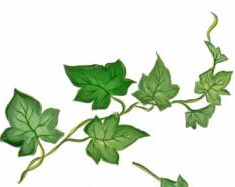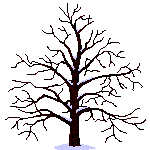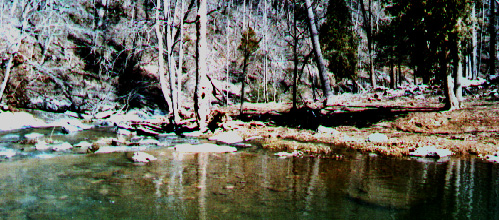Bertrand Russell



The origins of underlying ideas.
| “The fundamental cause of trouble in the world today is that the stupid are cocksure while the intelligent are full of doubt.” | ||
Bertrand Russell |
||
 |
Ecological Thought |  |
------------ |
||
| We ride together creatures on a common craft with only our commitment to one another. | ||
From field investigation, to theory and to practical application what are the goals of ecological thinking?
All these goals are associated with discovery of the unimaginable exquisite capacity of life to change over time, yet remain consistent enough for self-recognition.
one | two | three | four | five
One goal is to extend to the limits of rationality the study of relations among living creatures and their milieu.
"In your body bacteria outnumber your own cells 10 to 1. Who is in control?"
"Researchers who study the friendly bacteria that live inside all of us are starting to sort out who is in charge –microbes or people?"
"Biologists once thought that human beings were physiological islands, entirely capable of regulating their own internal workings. . . .Over the past ten years or so, however, researchers have demonstrated that the human body is not such a neatly self-sufficient island after all. It is more like a complex ecosystem."
"In fact most of the cells in the human body are not human at all."
38
"Moreover, this mixed community of microbial cells and the genes they contain, collectively known as the micro-biome, does not threaten us but offers vital help with basic physiological processes–from digestion to growth to self-defense."
"So much for human autonomy."
38.
"The Ultimate Social Network," Jennifer Ackerman Scientific American. June, 2012. p. 36-43.
"Each substitution of a tame plant or animal for a wild one, or an artificial waterway for a natural one, is accompanied by a readjustment in the circulating system of the land. . . .we are too busy with new tinkerings to think of the end effects."
Aldo Leopold, The Round River, p. 163.
A second goal is to dispel our self-delusions and illusions about nature.
Of human hubris: "The reason argues biologist Sarkis K. Mazmanian of the California Institute of Technology, is our skewed view of the world.
'Our narcissism held us back; we tended to think that we had all of the function required for our health', he says."
Therefore, microbes are essentially "a fundamental part of us."
"Each individual (human) acquires his or her own community of commensals (from the Latin for 'sharing a table') from the surrounding environment. . . . By late infancy our bodies support one of the most complex microbial ecosystems on the planet."
" For the past five years or so scientists have been working to characterize the nature of this ecosystem."
p. 38
"The Ultimate Social Network," Jennifer Ackerman Scientific American. June, 2012. p. 36-43.
 "It
is hard to feel affection for something as totally impersonal as the atmosphere,
and yet there it is, as much apart and product of life as wine or bread. Taken all in all, this sky is a miraculous achievement. It works, and for what it is designed to accomplish it is as infallible
as anything in nature."
"It
is hard to feel affection for something as totally impersonal as the atmosphere,
and yet there it is, as much apart and product of life as wine or bread. Taken all in all, this sky is a miraculous achievement. It works, and for what it is designed to accomplish it is as infallible
as anything in nature."
Lewis Thomas, The Lives of the Cell, p. 148.
A third goal is to comprehend that size matters but only so far as we relate that to where and how something of any size functions and operates well.
A "census of microbial genes" revealed in the "human digestive system" alone "3.3 million genes (from more that 1,000 species )–about 150 times the 20,000 to 25,000 genes in the human genome"
p. 39.
"the first inkling that beneficial bugs might do us good came decades ago doing research on digestion and the production of vitamins in the guts of animals."
Necessary vitamin:
| function | only bacteria synthesize the needed enzymes | |
|---|---|---|
| 1 | cellular energy production | |
| 2 | DNA synthesis | |
| 3 | manufacture of fatty acids |
"The Ultimate Social Network," Jennifer Ackerman Scientific American. June, 2012. p. 36-43.
The only creatures that can take abundant nitrogen from the atmosphere and create a soluble nitrogenous molecule for bacteria, plants, fungus and animals to use is, are several species of bacteria.
"Bacteria were the sole occupants of our planet for more than half of the entire history of life; yet these single-celled organisms are among the smallest living things."
The fourth goal is then adding new findings to the slow accumulation of tested knowledge and putting these concepts together.
1830-2012
1834, the use of the word scientist by Rev. William Whewell
1860, Darwin's suggestions we are animals sharing a common ancestry with other forms of life.
1877, Karl August Möbius used the word biocenose to describe a community of oysters in the Elbe River as an example of an interacting assembly of living creatures that alter their surroundings
1890s, the discovery of radiation, X-rays, electrons and atomic collapse
1891, the term electron is used to describe the electric ion, by George Stoney.
1898, the use of the word photosynthesis for how plants make food from light
1905, the discovery that light and electricity are one; that energy, mass, and space-time are equivalent at light speed [186,000 mile per second].
1911, that the atom absorbs and reflects light in proportion to its mass/energy in electron orbital.
1936, Tansley proposes the term ecosystem to measure energy conversions in plants and uptake by animal and other consumers.
Albert Howard publishes his belief based on East Indian humus production, that enriching the soil is scientifically the only means of improving farms.
1942, Raymond Lindeman wrote an insightful paper, “The Trophic Dynamic Aspect of Ecology” served as a cornerstone of ecosystem ecology.
![]()
 |
|
Along
a riverside in Virginia, upstream of Natural Bridge. |
Just as science, as a word defining a particular viewpoint, did not exist in the 1700s, so ecology as a word was only first used by Henry David Thoreau in America and Ernst Haeckel (1866) in Germany during the middle of the 19th century. They used the term to refer to what Darwin had called a study of some living thing in the midst of its surroundings. The development of ecological concepts in biology took a century or more and is a fascinating study of how natural history died out only to be replaced by field ecology, that is the study of species and individuals in the inherent "organic and inorganic conditions of existence" to use Darwin's language.
A key period of development from 1871-1914 saw the emergence of ecological study included the development of economic biology, including oceanography, especially fisheries science, agronomy, and forestry.
In 1914, Henry Chandler Cowles, Victor Shelford and others initiated the creation –by plant and animal ecologists–of the Ecological Society of America; founded in Columbus, Ohio in 1915 the scientific exchange among specialists led to a call for the protection of significant manifestations of characteristic plant and animal communities of land and wetland associations throughout the United States.
In 1917 the ESA created a committee on the Preservation of Natural Conditions for Ecological Study, which lasted until 1946.
History of the Ecological Society of America, Burgess, p. 13
Frederick Clements and Henry Chandler Cowles (Americans) after Andreas Schimper (Alsatian) and
Eugenius Warming (Danish) began to develop the key idea of succession in landscapes from the initial propagation in a terrain of lichens, then forbs and after this grasses being replaced, under certain circumstances, by shrubs dominating the next stage and eventually forest vegetation in the eventual stages in the transformation of land under natural conditions. This succession also occurs after disturbance, such as the reversion of a fallow field to undomesticated conditions.
The idea was based on a belief that the dominant species in each preceding stage (lichens, forbs, grasses, shrubs) alter the conditions of their existence and the entire plant community changes as mature specimens crowd out remnants from one previous stage of development to the next dominant association of plants and animals.
At the time little was known of the significant role played by bacteria and fungus in allowing the shifts in dominant species to transpire over time. There was also limited understanding of the crucial role of fire dependent species and the suppression of fire in altering the species make-up, or composition of communities such as chaparral or scrub-oak associations.
Clements even developed an "organismal theory of vegetation," later ridiculed as a "super-organism" concept.
The work of Arthur G. Tansley (British) took the next step from plant associations to the structure and function of plant and animal communities which in 1935 he called ecosystems and analyzed their trophic levels to determine the productivity of plants as the productive foundation of an ecological system.
Based on Tansley's botanical insights as to trophic levels adjacent but different vegetation associations could be compared, as never before. Building on the idea that kinetic energy was being measured by the trophic fabric or ecological systems, as Tansley advised, European researchers called the evergreen conifer forests as opposed to the deciduous broadleaf forests, or grasslands, or rainforests, as each a different biocoenose, after the Greek terms bios for life and kinesis for movement; meaning the movement of energy and nutrients through the parts of all ecological systems.
Ignition 
Production
leads
to
.......
Consumption
to what
end ?
Reuse is the essential process in nature. Dividing the Earth into plant and animal realms revealed patterns of similarity the date back to Von Humboldt and Wallace's work about the earth as a mesh of zones; instead Tansley saw the zones as a mesh of components functioning as a circuit of interdependent cycling accumulation of what we would now call biological wealth. Albert Howard suggested farmers should study forests, to best understand how continuous growth is nourished by death and decay.
"The White House at Chelsea", Thomas Girtin, 1800, Watercolour on paper; support: 298 x 514 mm, Tate Gallery.
River mouths are called estuaries. Estuaries are among the earliest places where the study of oysters and oyster bars first led a German investigator to use the term living system –a forerunner of ecosystem– or biocoenose, to describe the power of life to transform an inanimate terrain. This was Karl Möbius in the Elbe estuary in the mid nineteenth century.
Revolutions in ideas–that ecology is a completely integrated means of viewing natural associations.
Duty to change behavior due to impacts
Ecological Problem solving discussion
Nature viewed from a ecological, stochastic and contingent perspective.
Vocabulary
- biocoenosis–groups of organisms living closely together forming a natural ecologic unit
- The European term for a biotic community
- biotic community
- habitat
- Carrying capacity and assimilative capacity contrasted
- Ecological versus economic values
- Land
- Nature defined in Greek traditions and etymology
- biological diversity
- Words I use, defined.
- more words
Goals:
 |
one
|
one
| two
| three
| four
| five
Robie House, Chicago; Frank Lloyd Wright, 1900s, ecology is a study of the human household.
The adoption of new developmental concepts
Preserving biological diversity
Proceeding with sustained yield in a situation of uncertainty.
Howard, Albert (29 February 1936), "Manufacture of Humus by the Indore Process", Nature "Letters to the Editor." 137 (3461): 363–363.
My experience has "convinced me that quality in plant and
animal products, as well as disease resistance in crops and live stock, are the natural reward of properly nourished protoplasm, and that one of the factors on which quality and disease resistance depend is an adequate supply of humus, prepared from vegetable and animal residues, in the soil."
For more of Albert Howard's writings go to his library on-line
Yangtze River's Three Gorges Dam will flood this city's riverfront.
Practice:
Crucial summary of ecological problems
Forb, a native, non grass, broadleaf, herbaceous range plants eaten by livestock. Responsible for a great deal of animal production in arid and semiarid regions. Such species as: Yarrow, lugworm, water hyssop, aster, milkweed, goldenrod, fireweed, clover, thistle, etc. Early colonizers of barren land, gravel bars, and burned terrains.
Lindeman, R. L. 1942. The trophic-dynamic aspect of ecology. Ecology 23:399-418.
Goals of ecological study are:| one | two | three | four | five |
subject index | climate | authors | historians | natural design | more on nature | data | home |site-map